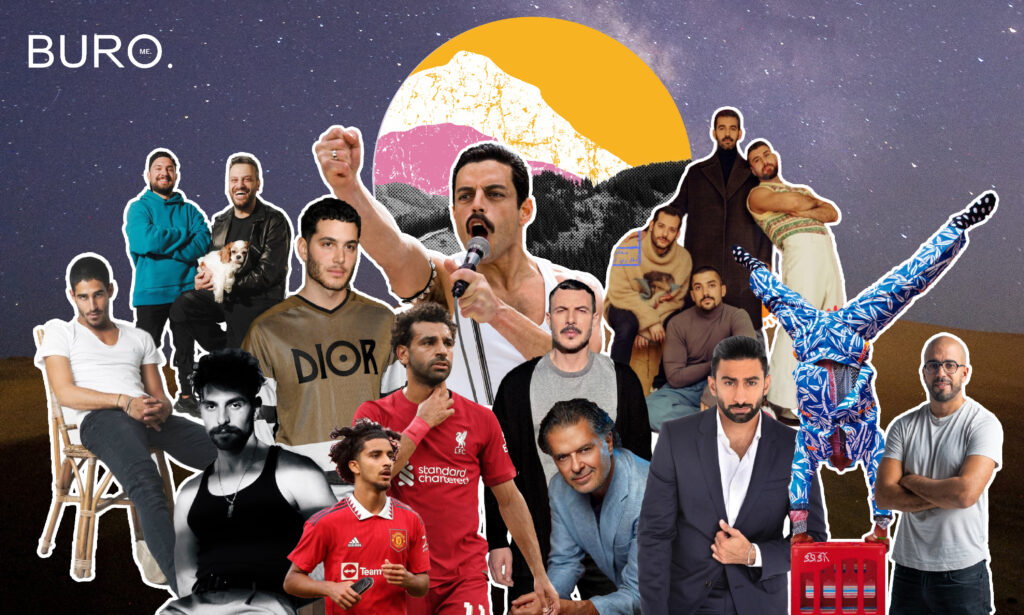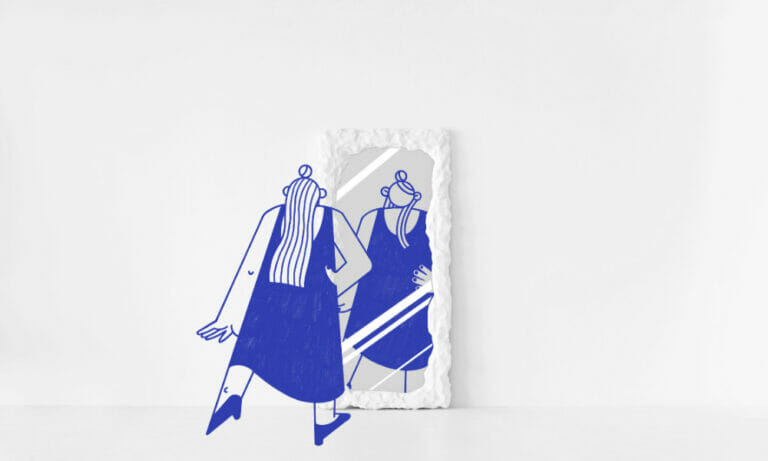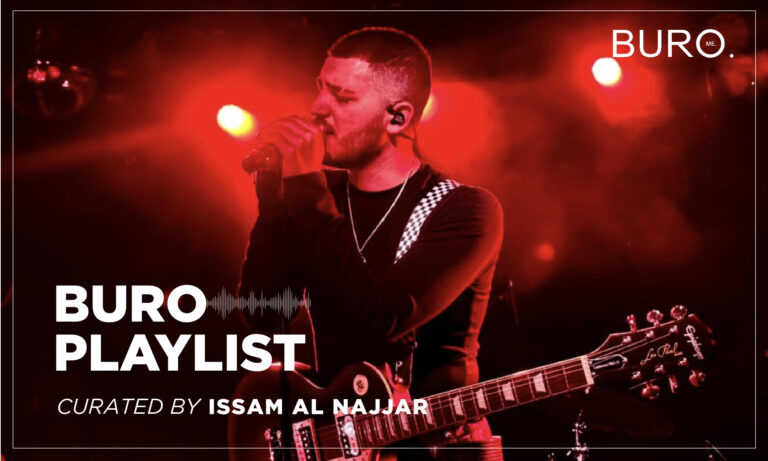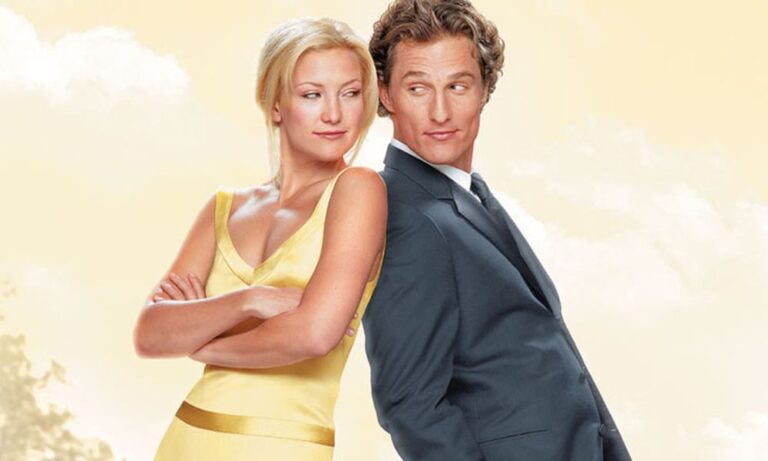Is this the real life?
Is this just fantasy?
Caught in a landside,
No escape from reality
Open your eyes,
Look up to the skies and see,
I’m just a poor boy, I need no sympathy,
By Frederick Mercury
I recall two incidents (two of many) that have challenged my identity as an Arab, or better said, have questioned the image of an Arab man and how it is perceived globally until recently. One in 2003 trying to process my student visa to the Netherlands to join the Amsterdam Fashion Institute, and the other in 2018 when I was part of the launching team as creative producer of a renowned fashion magazine.
As many of you relate, traveling around Europe or the USA after nine eleven as an Arab was a nightmare. I had arrived in 2003 over two months late into my academic year at the Amsterdam fashion institute, and by the time my student visa was issued, my fellow classmates had already made friends and figured out their bearings. I remember upon arrival I was interviewed by a local newspaper journalist who was interested in documenting how I felt about being the last student to arrive on campus, and whether my nationality was a key player in the delay of the whole student visa process. “Yes it was! and no I am not a refugee nor a terrorist. I am here because of my talent and I need no sympathy. I am an Arab and I shall graduate with distinction” I replied.
Fifteen years later, I witnessed American-Egyptian actor Rami Malek on the cover on an international magazine under one of its many regional brand editions; this one being the Middle East version (few weeks before he won an Academy Award for Best Actor for his portrayal of Freddie Mercury in the movie Bohemian Rhapsody) experiencing mixed emotions, not to argue that Malek’s talent is in any way open for discussion, but it kept me thinking how much of our local talents are just missing the proper branding, the “emballage”, the endorsement of the other world, and let me be frank we were missing out on the discipline the fashion industry demands. Following that issue, I traced throughout whether on magazine covers or on social media platforms, Arab icons portrayed like they have never been before. Dhafer L’Abidine, Mo Salah, Ahmed Shihab Eldin, Ragheb Alama, Mashrou’ Leila, French Montana, Fai Khadra, Zidane Iqbal, Bassel Khaiat, Cheb Khaled, and the list goes on.
This is to note that over the past decade, there has been a heightened awareness of social justice, diversity, and inclusivity in the fashion industry. As such, the image of an Arab man has undergone significant metamorphosis, evolving from crude stereotypes to nuanced and more varied representations. One key factor that has contributed to this evolution has been the rise of social media and e-commerce platforms. The liberty and exposure that these platforms offered, allowed us as Arabs (in this article focusing on male figures) to bring to the table a new conversation about who we really are, and what we yet have to offer beyond media propaganda that was dictated upon us. No we are not a new Arab breed, we have just evolved like all other nations and the beauty that this region has constantly strived to share has always been everlasting unfolding.
Overall, the fashion industry in the MENA region has become increasingly diverse, inclusive, and globally recognized in recent years. While there are still challenges, such as limited access to funding and resources for emerging designers, there is an undeniable energy and enthusiasm for fashion in the region that is driving the industry forward.
In the last decade, there has been a marked increase in the representation of Arab men in the fashion industry. They are seen as style icons and trendsetters, and their unique fashion sense has been recognized and celebrated. Many Arab men are now successful models, designers and fashion influencers, and they are often featured in fashion magazines and social media platforms. The Arab world’s growing influence across various regions has brought new styles and cultural fabrics to the forefront, which provides a unique perspective in the fashion industry.
The last decade has seen a significant shift in the portrayal of Arab men. From being characterized only by traditional attire, the fashion industry has witnessed a revolution in which modern fashion designers and models alike are contributing to the redefining of Arab men’s style.
The Arab Spring had a profound impact on the fashion industry in Arab countries, which saw a surge in the creation of new brands and the emergence of new fashion designers. The event brought to the forefront the long-standing traditions, and the rich cultural heritage of Arab men; this contribution, combined with modern influences, resulted in a unique mix of traditional and modern fashion styles. We are living a fashion media communication evolution, and here I cannot but mention: the work of Hassan Hajjaj who has had considerable influence on fashion with his photography, the genuine language of Anas Bukhash that made a dialogue with a celebrity relatable, the stories and prints of fashion brand Ta Guele that brought our street culture to retail, the strokes of El Seed art that remodeled the unseen underground, and the lyrics of Saint Levant that made Gaza speak again to this generation. I have only with a lot of regret only mentioned a fraction of what has been boiling and waiting to be heard in an outburst.
Arab male icons of the past decade and their contributions to the evolution of the Arab man’s image have shifted cultural norms and broken stereotypes, helping to create a progressive and empowering image of Arab men. Their triumphs demonstrate that the Arab male identity is multi-layered and can be expressed in a variety of ways, reflecting the rich diversity of Arab culture.
The image of the Arab man has undergone profound changes within the past decade. It has shifted from a conservative, Western-influenced, and oftentimes oppressed image to one that is unique. Trendsetting Arab fashion icons have showcased why modern Arab culture is often referred to as the “New Arab wave”
This article is an ode to the Arab rhapsody that might have often been silenced but as of today shall be sung out loud.
*footnote/RHAPSODY – (in ancient Greece) an epic poem, or part of a poem, of a suitable length for recitation at one time.




